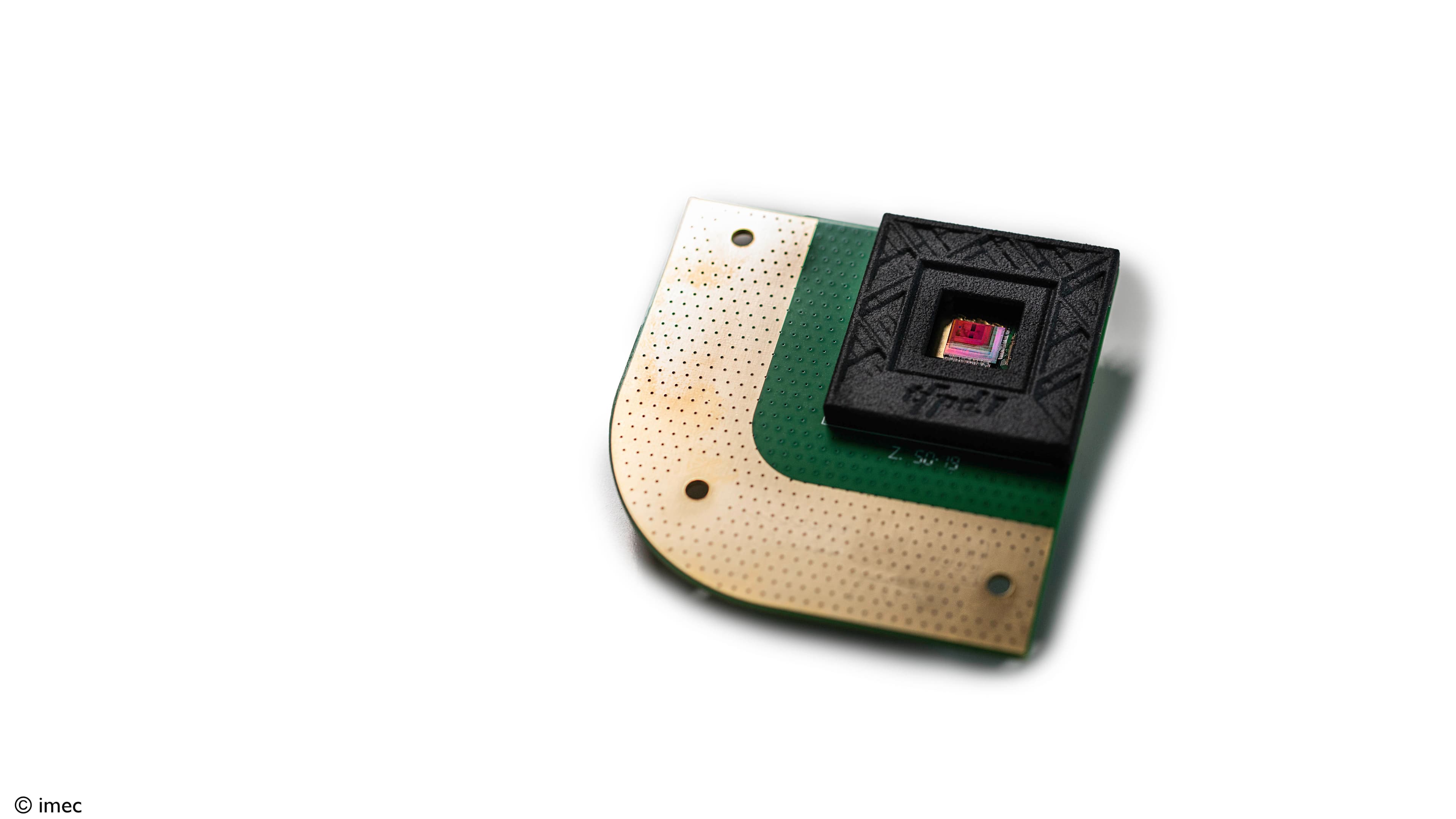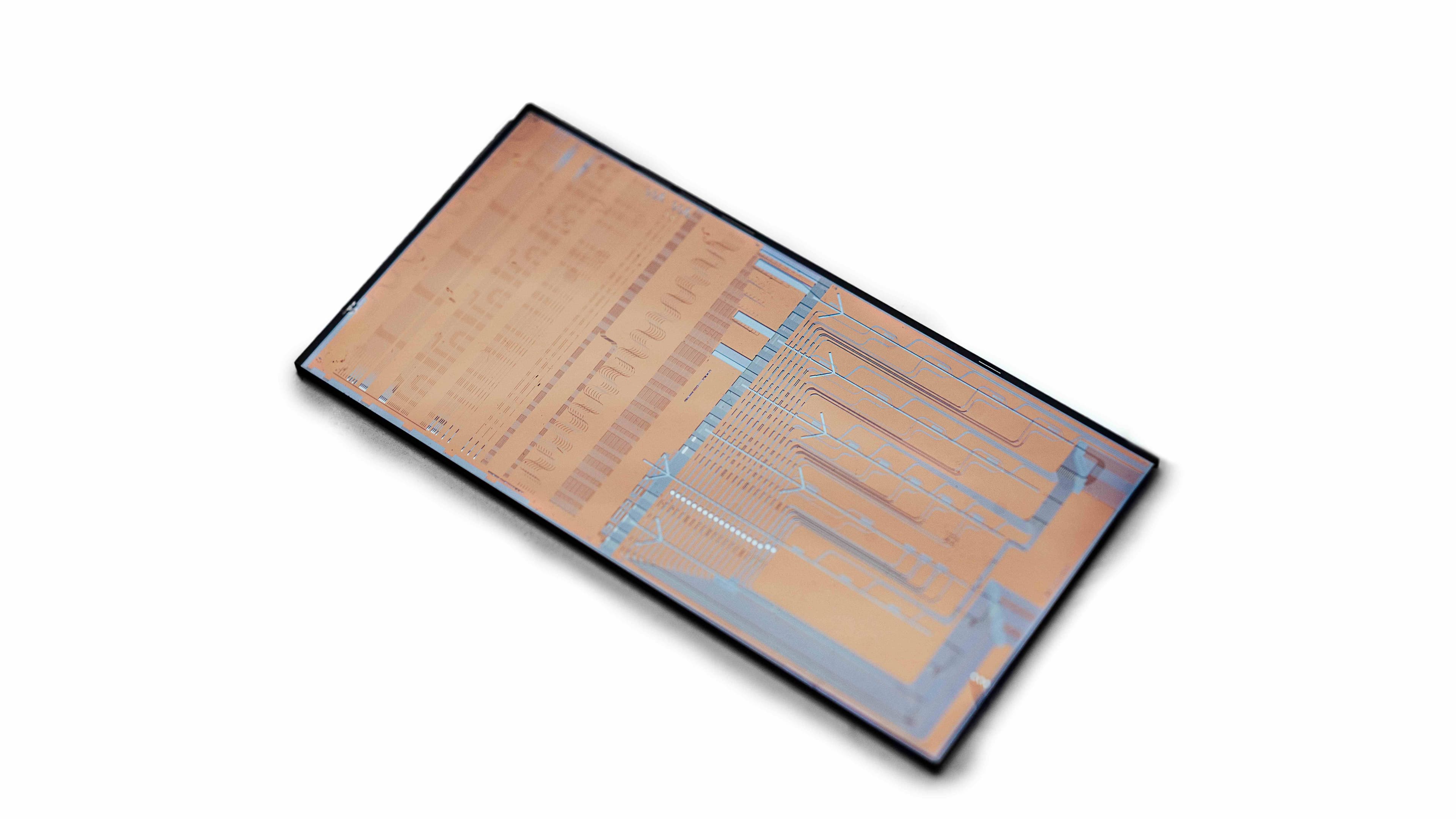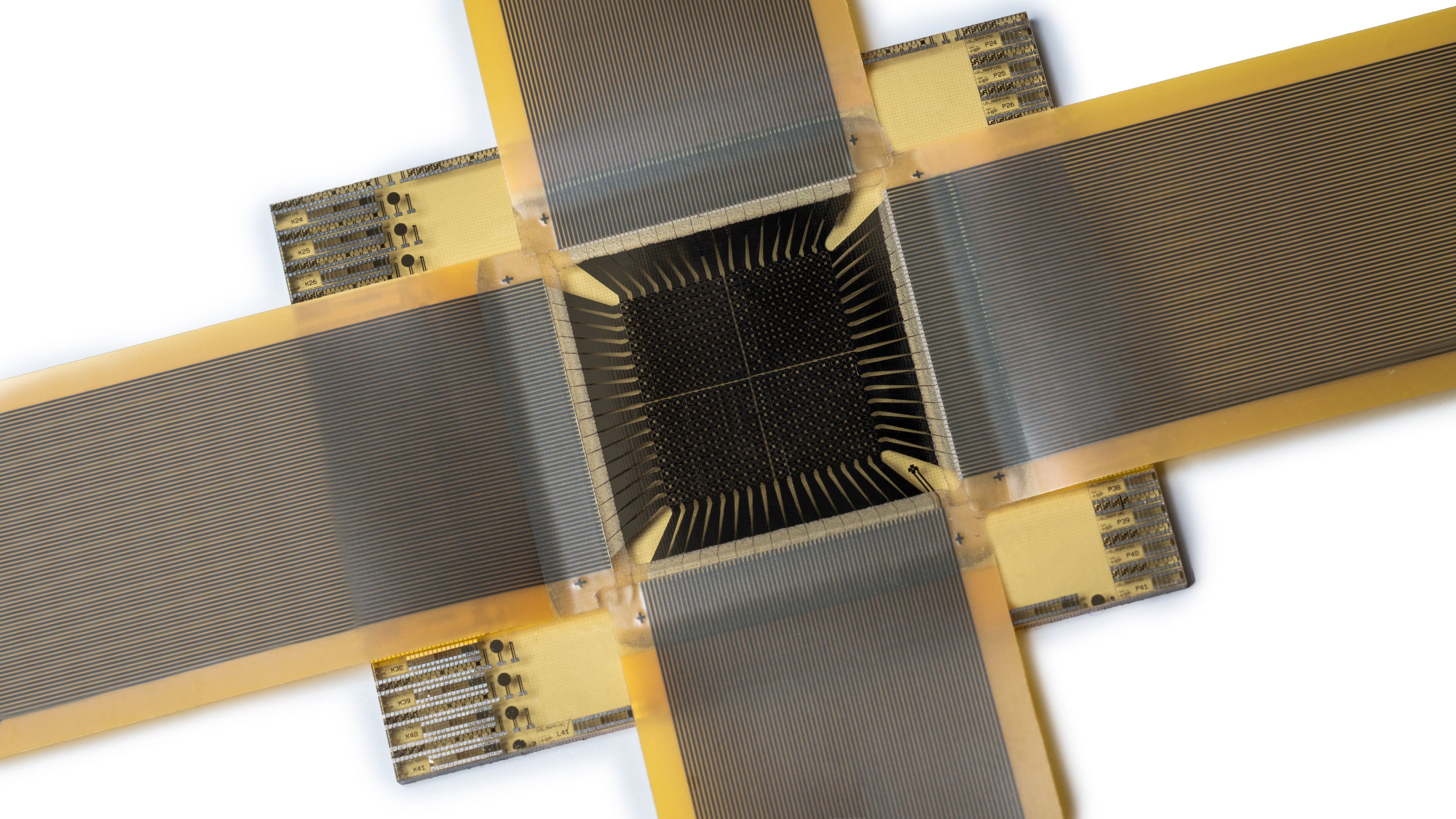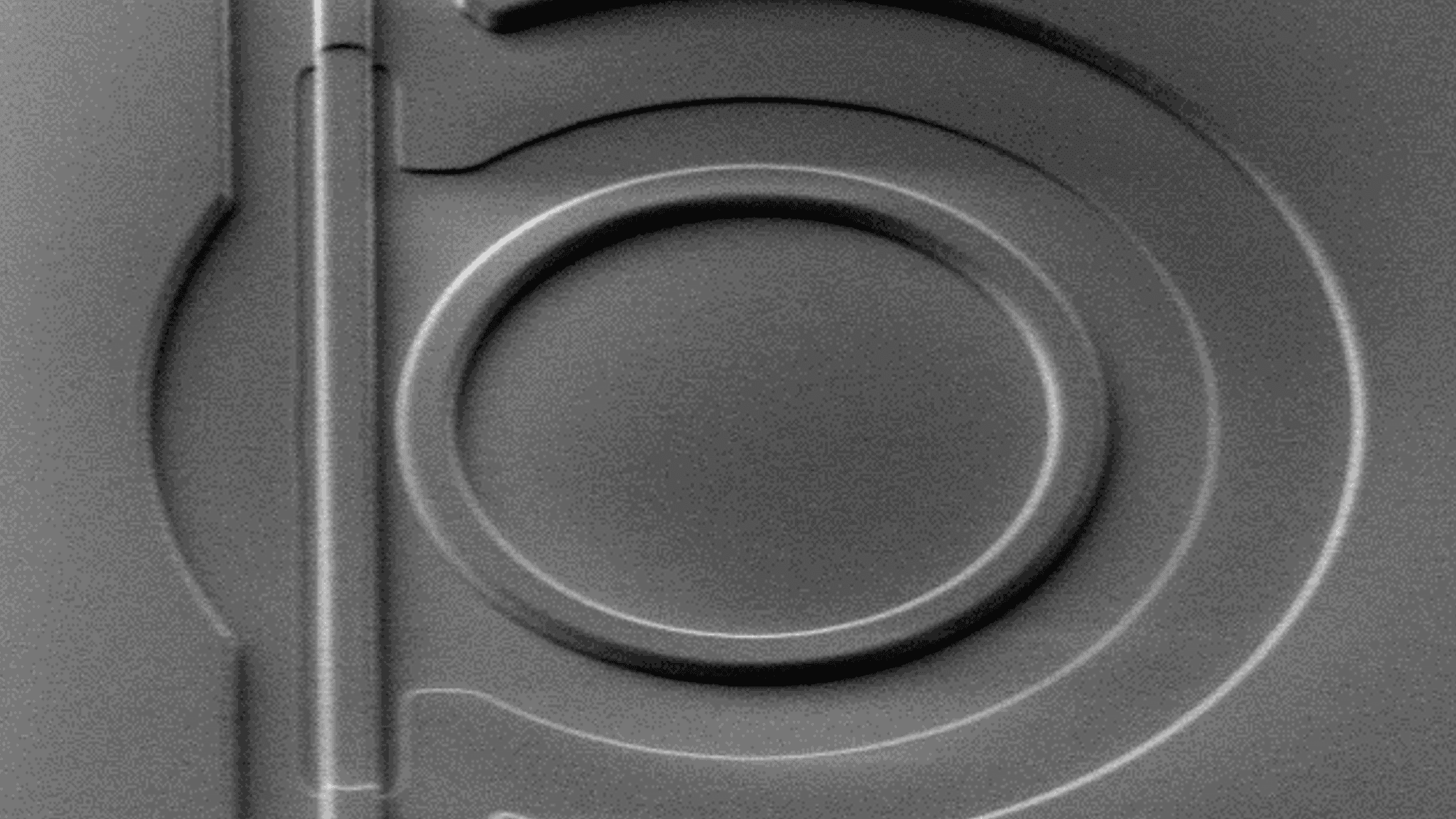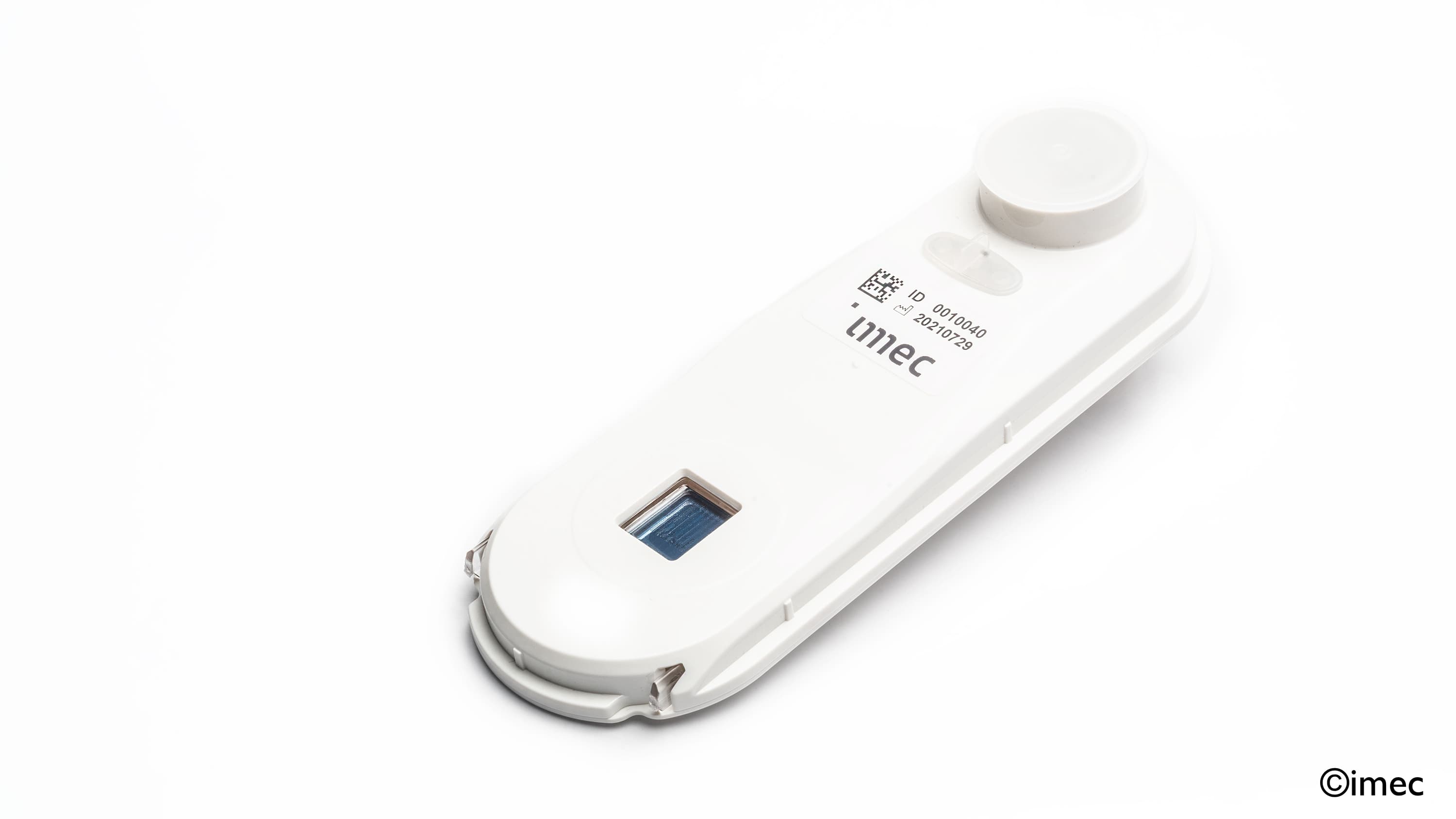
Diagnostics technology
By shrinking and integrating components, chip technology enables a future where more accurate and timely diagnoses lead to better health outcomes.
The COVID-19 pandemic demonstrated the importance of accurate, fast, convenient and inexpensive systems for medical diagnosis. In that respect, the value of semiconductor technology cannot be overestimated. Through on-chip sensors, CMOS electronics, microfluidics, and integrated photonics, it can shrink the components of diagnostic systems. It makes them affordable through mass production. And is, therefore, key to transforming expensive bench-top equipment into compact, easy-to-use, disposable tools.
On top of that, advanced chip technologies, often combined with AI, open the door to novel diagnostic methods that allow us to catch certain illnesses – such as neurodegenerative diseases – at a much earlier stage.
Novel diagnostics technology concepts developed at imec
Through the years, imec has leveraged its infrastructure and expertise to develop several innovative diagnostic concepts. Some are brought to the market, for instance through miDiagnostics, an imec spin-off established in 2015. Others are available for further development or as building blocks for integrated systems.
Photoacoustic diagnostics
Most medical imaging techniques come with an inconvenient trade-off between resolution and depth. Photoacoustics overcomes this by combining the resolution of light- with the depth of sound-based imaging.
The photoacoustic principle states that when light is absorbed by a sample, it generates sound waves. These can be picked up by extremely sensitive microphones and reconstituted to a high-resolution image of the object.
Because the light source is harmless laser light and there’s no need for contrast agents, this technology is completely non-invasive. And it can be tuned to spectroscopic applications, such as identifying biomolecules based on their spectral signatures.
Semiconductor technology is a great enabler of photoacoustic diagnostics because it allows for the on-chip integration of the light source and the ultra-sensitive microphones. For these microphones, imec uses a dense array of optomechanical sensors in silicon photonics. Their low detection limit improves the traditional tradeoff between imaging resolution and depth in ultrasound – opening the door to low-pressure applications such as through-the-skull brain imaging. Because they can be integrated with photonic multiplexers, they reduce the necessary number of wires. And they can be built into instruments such as miniature catheters.
Dive into this in-depth article for more about photo-acoustic imaging
Hyperspectral imaging for diagnostics
Even when biological tissues look identical to the human eye, their spectral signatures when reflecting light across many electromagnetic wavelengths can be vastly different. When picked up with a hyperspectral sensor and dedicated software, these signatures can be used for diagnostic purposes.
The value of spectral imaging for medical purposes has been recognized for some time. But its clinical application is now accelerated thanks to the emergence of on-chip hyperspectral filters that:
- Make hyperspectral imaging more compact, so that it can be integrated more easily into medical tools.
- Enable hyperspectral video, which is often essential when dealing with living tissue.
An exciting use case is the early (pre-symptomatic) diagnosis of Alzheimer’s disease by observing the retina through a hyperspectral sensor and looking for the spectral signature of the accumulation of certain proteins.
Silicon photonics-based CVD diagnostics
The European-funded InSiDe project targets mobile, early-stage cardiovascular disease (CVD) diagnostics and monitoring. At the heart of the envisioned handheld device lies silicon photonics technology: a low-power laser is pointed at skin overlying an artery. The doppler shift of the reflected beam allows to determine CVD-related biophysical signals such as the skin vibration and amplitude.

InSiDe medical device prototype for laser Doppler vibrometry measurements on a patient's skin to deduce metrics for arterial stifness and diagnosis of cardiovascular diseases.
On-chip PCR
For many diagnostic applications, DNA-based detection remains a touchstone when it comes to reliability. And for the crucial part of DNA amplification, polymerase chain reaction (PCR) is the most popular technique.
Bringing PCR to a microfluidic chip speeds up the process, reduces costs and increases accuracy. What’s more, the molecules of interest can be quantified by means of digital droplet PCR (ddPCR).
COVID-19 breath sampler
The PCR test that was most often used during the coronavirus pandemic is based on a nasal swab, which makes it uncomfortable for the test subjects. What’s more, it needs to be administered by trained personnel and analyzed in specialized labs – which takes at least a few hours.
Other test methods, such as the rapid antigen test, come with their own drawbacks. This is why imec believes in the power of aerosols for the rapid diagnosis of infectious respiratory diseases.
Our COVID-19 breath sampler gives an accurate result within no more than 18 minutes, is easy and comfortable to use, and sensitive in a pre-symptomatic stage. It can be tuned to discover other infectious diseases as well, and we’re even looking into its value for tracing certain cancers.
Software for DNA analysis
Particularly for rare diseases, DNA-based diagnostics is a huge leap forward. Think about an AI platform wherein doctors upload their patients’ genetic codes and phenotypes. And the software then searches for relevant correlations.
Of course, this implies rapid, even mobile sequencing of a person’s DNA – including genome analysis that reveals interesting variants. On top of its next-gen sequencing hardware, imec is therefore looking at software strategies such as its elPrep sequence analysis software and the genome analysis project.
The second step, comparisons of personal DNA profiles through large-scale population genomics, must be performed with the utmost care for people’s privacy. That’s why privacy-preserving AI is also an important research track within imec.
Read this article for more information about these topics
Work with us
By tapping into imec’s IP, infrastructure and expertise, you can develop new chip-based diagnostic concepts up to prototypes and even low-volume production. Get in touch to discuss a collaboration that speeds up and de-risks your development.






